Results 2,551 to 2,560 of 12091
Thread: Anandtech News
-
01-12-13, 07:30 PM #2551
Anandtech: New from Buffalo Technology - Updated AC1750 802.11ac router, MiniStation
Ganesh and I dropped by Buffalo Technology at CES 2013 to get a look at their upcoming products. I'll leave most of the MiniStation NAS news to him as that's his area of expertise, but I saw three other things that sort of fit under my umbrella. First is an update to Buffalo's 802.11ac router lineup. If you'll recall, Buffalo was first to market with an 802.11ac router based around Broadcom's introductory 802.11ac reference design with a BCM4706 SoC at the core. Buffalo announced a refresh to those devices with a three-stream and two-stream version based around their new BCM4708x SoC which we've talked about before. The new routers are called the AC1750 and AC1166, respectively, for three-stream and two-stream ac. The two-stream version will go on sale for $149, the three-stream version will cost around $179 early 2013.
These also add support for 802.11ac beamforming which the previous generation lacked, the faster SoC, USB 3.0 support (and faster NAS throughput), improved QoS that uses all the Broadcom accelerators, and most thankfully a fully revamped UI. The new UI includes a mobile-optimized version which looked very nicely polished, and a desktop version with simple toggles and very clean visual appearance. I think this might be the best part of the new routers, as the previous generation 802.11ac Buffalo routers had an extremely difficult to navigate web interface.
This new faster SoC now enables 802.11ac routers to fully saturate the 1300 Mbps PHY, routers based on the previous generation were actually gated by that previous generation's SoC performance, as Ganesh and I discovered.
Buffalo also announced a two-stream 802.11ac USB 2.0 dongle called the AC866 (pictured above) which will be priced at $69. I'm still wishing and hoping for a USB 3.0 three-stream 802.11ac dongle to appear somewhere.
The next news is an update to the Buffalo MiniStation Thunderbolt which I reviewed a while back. This will now come in an SSD-enabled flavor in addition to the two current SKUs that include HDDs. I'm told that the design will include a Toshiba SSD, though I don't know exactly which Toshiba SSD is inside, nor was there any information on pricing or storage size (I believe 240 GB was shown). An SSD version is already shipping in Europe but with a lower-end drive inside. Buffalo was showing around 180 MB/s writes and 380.3 MB/s reads on the MiniStation Thunderbolt SSD in a daisy chained setup at their booth. 
The device daisy chained with the MiniStation Thunderbolt SSD is a new product that doesn't quite have an official name yet. This is a dual drive version of the MiniStation Thunderbolt running a RAID-0 with two of the same Toshiba SSDs used for the Thunderbolt SSD. There's also the higher end Thunderbolt controller inside to support daisy chained setup. The two-drive version isn't designed to allow users to change the drive inside, just like the current single drive MiniStation Thunderbolt, and is Thunderbolt-only (there's no USB 3.0 on the back). Buffalo was showing sequential write speeds around 600 MB/s and reads of around 700 MB/s. The Thunderbolt duo drive will be announced in the April or May timeframe. 
Source: Buffalo
Gallery: New from Buffalo Technology - Updated AC1750 802.11ac router, MiniStation Thunderbolt with SSD, and MiniStation Thunderbolt Duo






More...
-
01-12-13, 08:30 PM #2552
Anandtech: Imagination Demonstrates PowerVR Series 6 Rogue on LG's H13 SoC
I stopped by Imagination Technologies at CES 2013 and talked about their upcoming GPU IP blocks and a few recently announced SoCs, and one demo caught my eye running on one such SoC. This is the year we finally get to see some PowerVR Series 6 Rogue in silicon shipping and in the flesh, and the SoC in this case is LG's home entertainment oriented H13 (hence the H) SoC that was announced at the show. 
Imagination was showing off the H13 running through a variety of their own custom-built demos showing off OpenGL ES 3.0 features like multiple render targets, occlusion queries, expanded MSAA support, new texture formats, and such that we've gone over already. We don't know too much about LG's H13 SoC at this point beyond that it likely isn't an ARM Cortex A15 based design, but does include a two-cluster Series 6 GPU (G6200?) at unspecified clocks. Alongside that live demo on real production silicon was a four-cluster Series 6 GPU being simulated on an FPGA inside a PC running much slower (obviously) thanks to very constrained memory bandwidth and clocks. 
I'm told that LG's H13 isn't necessarily the first production silicon with Rogue inside, but the first that's been shown and demoed in the wild. For this it's particularly exciting. I expect to see some more Rogue designs emerge later this year. 
The second part is some news about a subset of OpenGL ES 3.0 features that will be enabled retroactively on all PowerVR Series 5XT hardware. The entire lineup apparently has the hardware to enable these OpenGL ES 3.0 features as an optional extension inside OpenGL ES 2.0. Features include multiple render targets; occlusion queries; seamless cube maps; sampler access from vertex shaders; floating point textures; GLSL full-precision floating point; R and RG textures; min/max blends; and multisample render buffers. 
Imagination demoed some of the same demos they had running on Series 6 Rogue on an OMAP5430 development board with an SGX544MP2 GPU. I have no doubt that Imagination has enabled some of these ES 3.0 features retroactively so that some major customers of theirs can seamlessly transition to OpenGL ES 3.0 without leaving OpenGL ES 2.0 devices behind. 
Gallery: Imagination Demonstrates PowerVR Series 6 Rogue on LG's H13 SoC






More...
-
01-12-13, 09:00 PM #2553
Anandtech: A Look at Samsung's Curved Smartphone Concept and 4.99-Inch 1080p AMOLED D
I got a chance to look at some of Samsung Displays' new and upcoming products, probably one of the highlights of my CES 2013 experience. There's a bit to go through, but first up are their buzzworthy curved displays and a concept phone or two. I spent three years in my undergrad optical and electrical engineering education working on curving a CCD for use matching focal planes, and thus curved displays are instantly near and dear to me as interesting next steps.
Samsung was showing off a single-axis curve in their demo room. First is a larger size display with a relatively small bend radius. It's a hemispherical display designed for signage.
Next are two smartphone concepts. I've been wondering for some time what curved (not necessarily flexible) displays would enable or look like for a smartphone, and Samsung's concepts are actually pretty innovative looking. The two concepts have a bend on the horizontal or vertical axis — a bend on the right side, or bottom. Then a flip cover covers the planar section of the display while leaving the curved section exposed. This ostensibly allows glanceable information, notifications, and messages to be displayed without requiring a user to flip open the whole phone, and with AMOLED this section can be lit up without having to light up the entire display for saving some power. 
The bend radius on these two isn't very extreme but looks like it could be a compelling example use case for a smartphone design. I don't expect either of these designs to come to market immediately, but it's clearly something on Samsung's mind for future products. The entire touch layer and display glass is curved with the display underneath.
I'm burying the lead a bit, but I also caught a glimpse of what might possibly be the display headed to the next generation Samsung Galaxy smartphone. On display was an example roadmap of Samsung AMOLED displays, and at the far right slated for Q1 2013 launch is a Full HD 1080P display 4.99-inches diagonal with 440 PPI. I didn't get close enough to be able to see what the subpixel geometry or stripe was, but 440PPI underneath and the fact that it's the successor to the 5.55" display (from the Note 2) makes me think this is likely RGB. 
Samsung is also claiming a 25 percent power saving using a new material on new AMOLED revisions, and also has a low power mode that I don't know much about with 47 percent power savings. Again, I strongly suspect this display will find its way into whatever Galaxy S 4 ends up being. 
Gallery: A Look at Samsung's Curved Smartphone Concept and 4.99-Inch 1080p AMOLED Display






More...
-
01-12-13, 11:00 PM #2554
Anandtech: USB-IF Announces USB 3.0 10 Gbps Development, Demos Power Delivery and Dis
I stopped by the USB Implementers Forum booth, where they had both an interesting non-final demonstration of the new USB Power Delivery specification and some news about the new 10 Gbps USB 3.0 development specification. First, the 10 Gbps USB 3.0 development announcement stipulates continued use of the same cables and connectors for higher throughput, and although there will be a 10 Gbps certification program for cables the USB-IF expects almost all but the lowest end cables to pass without any reworking. I'm told that the newer revision enables 10 Gbps by using more efficient coding and also enables improved power efficiency. 
The standard is in development presently and should be completed by the middle of the year. It will then take the normal development cycle for silicon and controllers to make it onto the market. The USB 3.0 specification stipulates a meter long cable that's entirely passive, as opposed to other active solutions on the market presently. Longer lengths will require active componentry. 
I also wasn't aware but earlier this year the USB-IF finished the SSIC (SuperSpeed Inter Chip) specification which is essentially the USB 3.0 analog of HSIC (HighSpeed Inter Chip - USB 2.0). This is hugely important for smartphones and tablets where the limits of HSIC are already being encroached upon or actively hit with certain 2x2 802.11a/b/g/n combos, and will be a problem with 802.11ac combos. In addition I fully expect to see future SoCs implement SSIC for use with both these 802.11ac combos and faster 3GPP Release 10 or Category 4 basebands where there is a lot of attention as throughput continues to increase. 
Next up was a demonstration of the USB Power Delivery (PD1.0) specification working in conjunction with display driving. The USB-IF modified a Lenovo X300 notebook to accept power through USB 3.0 and the PD specification, and used a power delivery mechanism on the middle display to both power it, and the notebook with 65W. At the end of the daisy chain was a thumb drive plugged into the last monitor's hub which was available to read on the notebook. 
The X300 was running Vista oddly enough, which took a while to enumerate and connect to the other two displays, but did indeed simultaneously drive both a 1080p and 2048x1156 display through a daisy chain with good fluidity for a non-final demo. This combination of specifications is clearly USB-IF's response to Thunderbolt, and looks like a possibly even more impressive solution thanks to the ability to simultaneously drive the displays and charge the notebook over one cable.
Source: USB-IF (Power Delivery) (USB 3.0 10 Gbps)
Gallery: USB-IF Announces USB 3.0 10 Gbps Development, Demos Power Delivery and Display Driving






More...
-
01-13-13, 03:01 AM #2555
Anandtech: CES 2013 LTE Throughput Face-Off - AT&T versus Verizon Wireless
Last year I ran a series of speedtests on both AT&T and Verizon Wireless LTE during CES, the results of which were pretty interesting. My friends continue to poke fun at how obsessive I am with running speed tests, and this year I decided to do the same experiment during CES 2013 by carrying around an iPhone 5 on AT&T LTE and HTC Droid DNA on Verizon Wireless LTE and running speedtests at the same time and place periodically on the two handsets side by side. 
The places I tested are pretty much indicative of your average tech journalist's in Las Vegas for CES — I ran a few in my hotel (LVH), inside and throughout the LVCC North and South halls' show floors and concourses, the Venetian, Mandalay Bay, Palms, and a smattering of the Las Vegas Strip itself. Most of the major hotels have DASes inside them (Distributed Antenna System or sometimes Digital Antenna System). I know for a fact that at least the Palms and Venetian have DASes, as does the strip itself. Inside the LVCC there are multiple DASes, with at least three different systems visible that I managed to spy.
Spotting these indoor systems is almost always a challenge, as they're camouflaged intentionally to both dissuade vandalism or theft, and also for aesthetic reasons. Even if you know what you're looking for they're at best difficult to spot or out of sight and sometimes completely camouflaged. That said, I snapped photos of the ones I was pretty confident were in fact DAS antennas and put them in a gallery.
Gallery: Distributed Antenna Systems of CES 2013 - Palms Hotel and LVCC
So how did AT&T and Verizon fare at CES 2013? First, I should note that both Verizon and AT&T were best I can tell only using their 700 MHz spectrum assets, that means band 13 for VZW and band 17 on AT&T with 10 MHz of bandwidth. I didn't see Band 4 on the iPhone 5, and the DNA (and all new HTC devices) lacked Field Test or similar engineering menus that would enable me to check, but it lacks band 4 anyways. 
I ran 100 speedtests on both devices at the same places during my day (and night) at and around the show. Both were to the Switch Communications server in Las Vegas, for consistency of host. I then used my same script to create some histograms of the results, and stats.
 
AT&T LTE Results 
 
Downstream Stats (Mbps)
Avg: 16.677; Max: 44.928; Min: 0.632, StDev: 11.323
 
Upstream Stats (Mbps)
Avg: 4.370; Max: 16.015; Min: 0.081, StDev: 3.696
 
Latency Stats (ms)
Avg: 174.95; Max: 256; Min: 144, StDev: 24.2187
 
Number of Tests Run: 100
 
 When it comes to downstream throughput, it seems as though AT&T edged out Verizon Wireless for CES 2013, with AT&T bringing in an average of 16.7 Mbps compared to Verizon's 10.6 Mbps. On upstream, AT&T hits 4.4 Mbps, Verizon hit a slightly higher 4.7 Mbps. Latency is a bit more interesting, with Verizon having lower average latency at 130.1 ms, and AT&T coming in at 175 ms, but I suspect this is more a story about the different routing that each takes both through the ePC (Evolved Packet Core) and onto the internet and then test server. Both operators did pretty well during the show, all things considered. Upstream took a huge beating and varied wildly depending on how close you were to a base station and how many people there were around you, but tweeting, checking emails, and downloading the latest schedule at least worked. 
Verizon Wireless LTE Results
 
Downstream Stats (Mbps)
Avg: 10.585; Max: 39.65; Min: 0.702, StDev: 7.854
 
Upstream Stats (Mbps)
Avg: 4.680; Max: 11.402; Min: 0.041, StDev: 3.165
 
Latency Stats (ms)
Avg: 130.13; Max: 192; Min: 99, StDev: 17.153
 
Number of Tests Run: 100
I will say that although AT&T had better downstream throughput at the end of the day, on the whole Verizon's coverage profile continues to be much better. In the Mandalay Bay I lost AT&T connectivity quite a bit and suspect the building either doesn't have a DAS or AT&T isn't hooked into it, whereas Verizon was solid. Inside the LVCC both operators understandably had great coverage. 
I have to hand it to both major operators for keeping their LTE networks up at the show floor. I remember before Verizon or AT&T deployed LTE having limited to no connectivity in Las Vegas, much less inside LVCC during CES, and this seems to now largely be a thing of the past. 

More...
-
01-13-13, 11:00 AM #2556
Anandtech: WiLocity Bringing WiGig To Your Desk, Lap, Home and Office
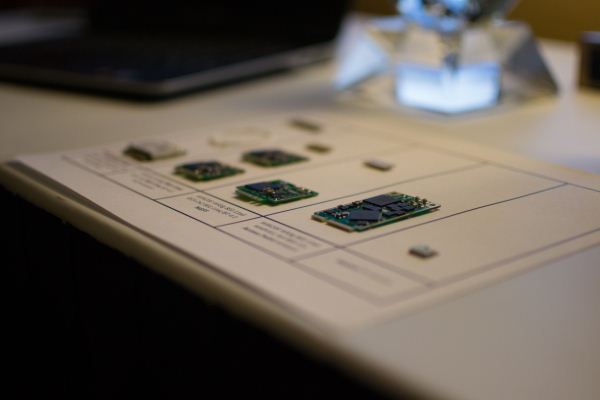
We had a chance to meet with WiLocity to take a look at their progress in bringing WiGig to market. Let’s start with a primer. WiGig (802.11ad) is an air interface that operates in the 60GHz range, providing massive bandwidth and some keen tech to eliminate crowding issues that are seen in 2.4GHz protocols. At such a high frequency, though, propagation is rather limited. So, though some provisions for bouncing signals around a corner are made, this is meant primarily as a line of sight interface. So what can you accomplish with WiGig? Let’s look at the demos.
 
WiLocity has fleshed out two routes for using WiGig, a networking protocol and a bus replacement. With a WiGig module installed in your device (tablet/PC at present) you can utilize multiple peripherals connected to a WiGig enabled dock. Your computer will detect these peripherals as connected through a PCI Express bus, and with so much bandwidth available, no penalty is paid versus having the peripheral connected to a wired PCI Express lane. The low latency lends itself to video and gaming applications. This is truly a wire replacement solution, and though it is limited to in-room experience, it’s still better than dragging cables around. 
 
 
The networking solution WiGig has developed is impressive, though its current state is better suited to the office than the home. Businesses that handle large files are often at the mercy of wired connections to rapidly move files between users. Though WiFi speeds are improving, and 802.11ac is finally starting to trickle out, maximum throughput is still achieved on GigE connections alone. Configuring a WiGig network over a bank of cubicles, though, would allow each client to receive greater than GigE speeds with just a few access points, and without interfering with other wireless products and devices. WiLocity’s solution uses 802.11ac as a fall back and when operating beyond line of sight, and does so seamlessly. 
That need for line of sight limits its appeal to closed environments, such as in the home, but as a value add, having an 802.11ac access point that also provides WiGig throughput in the same room as the router, there could be applications for media centers and home offices. 
 
In addition to the demos, WiLocity showed off its recently updated module (built in partnership with Qualcomm Atheros), now upgraded from 802.11n to ac, and featuring a new, smaller RF module that has 32 individual elements arranged in an almost omnidirectional fashion to improve performance. Marvell also has a new access point module, with 4x4 802.11n. Products featuring these module should be released this year, and the road map for the next few years continues this trend of improving service while shrinking the module size down further. Ultimately they would like to see a component small enough to be embedded in a handset. They expect the first WiGig equipped handsets to premiere in 2014, with mass production in 2015. For now, we’ll be on the look out for any WiGig devices that are ready to be run through their paces. 

More...
-
01-13-13, 07:00 PM #2557
Anandtech: Brian's Concluding Thoughts on CES 2013 - The Pre-MWC Show
Anand asked each of us to write up some final thoughts on CES 2013, something which is honestly a daunting task at best, and a potentially controversial or rage-inducing one at worst. Having now attended three CESes, I still have a relatively small window of reference within to gauge this one, but some things like CES need almost no context.
First, CES is and hopefully always will be a spectacle. I actually disagree with many who say that Las Vegas shouldn't be the venue for CES. That's because there's something appropriate about Las Vegas being the home to CES, since it's a city and environment I approach with as much skepticism and trepidation as the products and announcements made during the show. Almost everything you see isn't what it seems, and I've recounted a few analogies in person that I think bear repeating here. Just like the showiest buildings and people usually have the least to offer (and thus rely entirely on show and presentation to draw you in), so too do exhibitors and companies and everyone giving you their exactingly rehearsed pitch. That is to say good products and announcements draw their own crowds and don't need overselling with dramatic entrances and expensive demos. Some of the most engaging and busy companies I met with had almost no presence on the show floor, and instead had only a tiny meeting room with a single table and a few chairs. Similarly just like hotels on the strip appear close and within walking distance (signs can be read almost two miles away), so too should one approach the release dates for things announced at CES — they're almost always further away than they appear. Finally Vegas itself is an carefully engineered, computationally optimized environment designed to extract maximum dollar from anyone it entwines, and so too the CEA crafts (and engineers) a show that will be crowded regardless of the number of attendees, and record breaking in scale regardless of whether there's actually any real growth going on. I guess what I'm saying is that there is a certain kind of skepticism one has to approach everything CES related with, and in that sense the only appropriate context for gauging CES is itself, as a subset of Las Vegas. I don't think you could ever have a CES detached from that environment, and especially not without the pervasive, eye-stinging smell of the casino floors, which is a world-unique combination of cigar smoke, cigarette smoke, spilled drinks, sweat, hooker spit, and the despair of a thousand souls and crushed dreams. No, a CES detached from Vegas wouldn't be a CES at all.
So what are my concluding thoughts about this CES? I've heard lots of grumbling from a few of my peers that CES is increasingly irrelevant as a place to look for mobile news, but I think that's false. They're talking about handset announcements and superficial things one can get a hands-on with and take pictures of rather than actual mobile news. From a superficial mobile handset perspective, sure, CES is increasingly not the place to go; it's too close to MWC, and too many OEMs now want to throw their own events to announce specific handsets or just do it at the mobile show rather than get lost in the noise that is CES. Unless you're a case manufacturer there really isn't any reason to go launch your major handset at CES unless it is going to launch very early in the new year's product cycle. There were only a few major mobile handset announcements — Intel, ZTE, Huawei, and Sony announced new phones. Samsung dropped a token handset announcement or two in at the end, but nothing flagship at all.
On the other hand, there was actually plenty of mobile related news that wasn't handset related. You just have to know what to look for. Heck, the keynote was by Qualcomm CEO Paul Jacobs instead of Microsoft's finest. What clearer indication does one need that we're entering a mobile era where desktop takes a back seat?
There was plenty of mobile news as far as I'm concerned. Qualcomm finally announced MSM8974, the part which is essentially the MSM8960 successor on Qualcomm's roadmap, and a revamped version of APQ8064 with Krait 300 CPU inside. They also rolled out new Snapdragon branding which completely casts away Qualcomm's previous S-series and has me yet again fielding questions from everyone about what part now fits under what arbitrarily drawn umbrella in the 200 / 400 / 600 / 800 series (spoiler: Even I don't know how the existing lineup maps to the new numbering, just that the part I will keep calling MSM8974 is an 800 series and that APQ8064T is a 600 series). NVIDIA formally announced its Tegra 4 SoC the night ahead of the CES rush, and alongside it, Project Shield, its mobile gaming platform slash PC gaming accessory. In addition Nvidia announced its Icera i500 LTE platform and made some interesting promises about future upgradeability. Similarly Samsung announced Exynos 5 Octa, (an absolutely unforgivably atrocious name for an SoC that will expose at most 4 cores at once to the OS, and with 5410 not 5810 as its part number). Samsung also showed some curved displays and example designs I got a chance to look at, before telling me they regretted ever letting me into their showroom and meeting area. Broadcom also teased, but somehow didn't actually formally announce, its LTE baseband that has been rumored and rumbled about for months. We saw the first PowerVR Series6 GPU, a two cluster, running on LG's silicon that's inside some of its smart TVs. I met with Allwinner who talked about their A31 and A20 SoCs that are getting a lot of attention, in perhaps the event's smallest meeting room. Audience also announced their eS515 noise cancelation and sound processor, the first to implement a three-mic algorithm (others with three switch between pairs). Amazingly T-Mobile also lit up AMR-WB (adaptive multi rate wideband) for higher fidelity voice calls across the whole network right during the show. In short, there's a ton of mobile news, it just isn't mobile handsets or something necessarily tangible.
I guess my takeaway is that CES's niche in the mobile space isn't to be the place for handsets you can put your hands on, but rather for as a place to lay the groundwork for that to happen at MWC. Essentially companies announce or tease hardware for what's going to show up at the next show in specific devices, and I get that this is what most people are after, but if you're looking for CES to be that venue you're doing things very, very wrong. Anyhow, the above is really what CES seems like to me, with lots of announcements about things that we will shortly see in actual devices announced at that next show.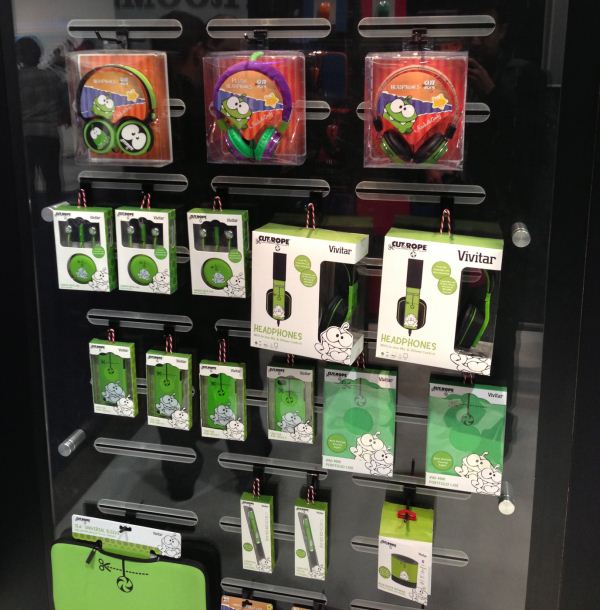
I found some headphones, iPhone cases, and notebook sleeves that Anand will love... (he has said numerous times he's tired of seeing basic games like Cut The Rope be the flagship titles)
Wireless charging was also a huge theme for my CES — somehow I met with every wireless charging standards body and a few charge transmission and receive chip suppliers in the same day. The differences between resonant and magnetic inductance based wireless charging systems are now burned into my head. The operators and device makers are testing the waters with just a few devices to see how consumers react, and the future of wireless charging hinges on their adoption.
The real winners of CES in my mind are two things — the Samsung Galaxy Camera, and Oculus Rift.
Samsung Galaxy Camera seemed to be everywhere. Even though the device had nothing to do with CES, I couldn't help but notice that everyone seemed to have one — journalists, analysts, attendees, exhibitors, you name it. People who were clearly sampled a review unit and others that simply went out and bought the device to try it out. I found myself pulling out my DSLR less and less and using the Galaxy Camera more and more for video, simple photos, and whenever I had it handy. Obviously the Galaxy Camera can't match even the most entry-level DSLR, but there's something immediately more powerful about a camera that's uploading photos and videos to Dropbox so you'll have them ready, or the ability to immediately tweet and post something interesting. Connected camera is going to become even more of a critical topic in the coming year, and I've never ever had a device elicit so many questions and curious glances as the Galaxy Camera in my time reviewing devices. Say what you want about the imaging experience or battery life, but Samsung did an excellent job nailing most of the core fundamentals and UX right out of the gate with Galaxy Camera. That's something the Nikon S800c and Polaroid are still a ways away from.
Oculus Rift I'm going to write a lot about in another CES related pipeline post, but their demos and pre-development platform hardware are already so much better than any shipping VR kit out there that it's embarrassing. The tracking speed and fluidity are scarily good, and the experience already so close to being phenomenally good that everyone describes the experience as "going in" and "coming out" rather than "putting the goggles on" or "taking them off." That isn't to say that things are perfect, but the development kit that's coming will be nothing short of impressive.
Finally, I have to hand it to the wireless operators who managed to keep their LTE networks up and working during the entire show. I fully expected at least one of the major operators to die entirely, and this is perhaps the first year that I haven't had massive issues doing simple things like sending SMSes or placing calls while being anywhere near LVCC. The numerous DAS (Distributed Antenna Systems) in the LVCC and major hotels did their job and worked well. Things weren't flawless or necessarily the fastest I've seen them but it isn't like connectivity died entirely.
CES 2013 drew to a close almost as quickly as it started from my perspective, and I can't help but admit that I already miss the insane pace of it all.

More...
-
01-13-13, 07:30 PM #2558
Anandtech: Ambarella Announces A9 Camera SoC - Successor to the A7 in GoPro Hero 3 Bl
I've been playing around with and trying to review the GoPro Hero 3 Black since the holidays, a small sports-oriented portable camera which can record up to 4K15 video or 1080p60 video with impressive quality. Inside the GoPro Hero 3 Black is an Ambarella A7 camera system on chip, while the Hero 3 White and Silver contain the previous generation Ambarella A5S. Both the A5S and A7 are built on Samsung's 45nm CMOS process.
During CES Ambarella announced their successor to the A7, the A9 (neither of which is to be confused with ARM's Cortex A7 or A9 CPU). This new camera SoC moves to Samsung's 32nm HK-MG process and brings both lower power consumption for the same workloads and the ability to record 4K30 video as well as 1080p120 or 720p240, double the framerate of the previous generation thanks to higher performance. The A9 is the direct successor to the A7 and enables 4K video capture with enough framerate (30FPS) for playback without judder, the previous generation's 4K 15 FPS capture pretty much limited it to use for recording high resolution timelapses or other similar scenes that would be played back at increased speed. 
The A9 SoC also includes two ARM Cortex A9s onboard at up to 1.0 GHz, up from the single ARM11 at 528 MHz from the previous generation. Ambarella claims under 1 watt of power consumption for encoding a 1080p60 video on the A9 and under 2 watts for 4K30 capture. The A9 also has built-in support for HDR video capture by combining two frames - thus 1080p120 becomes 1080p60 with HDR enabled. I got a chance to take a look at both HDR video capture on the A9 as well as 4K30 video encoded on a development board and decoded using the same board on a Sony 4K TV. I came away very impressed with the resulting video quality, clearly the age of 4K/UHD is upon us with the availability of inexpensive encoders like these that will make their way into small form factor cameras. 
I wouldn't be surprised to see a GoPro Hero 3 Black successor with the A9 SoC inside and those higher framerate capture modes fully enabled at some point in the very near future since the A9 SoC is now available to customers.
Source: Ambarella
Gallery: Ambarella Announces A9 Camera SoC - Successor to the A7 in GoPro Hero 3 Black






More...
-
01-13-13, 08:30 PM #2559
Anandtech: ASUS $149 7-inch MeMO Pad Headed to the US, Powered by VIA SoC & Android 4
Just after we got back from CES, ASUS wrote to tell us that a cost reduced version of the 7-inch MeMO Pad was coming to the US. Starting at $149 for an 8GB model, the MeMO Pad features a VIA WM8950 SoC. We haven't seen the VIA name in a while but inside the SoC is a single ARM Cortex A9 CPU running at up to 1GHz and an ARM Mali-400 of unknown core configuration. The total DRAM size hasn't gone down compared to the Nexus 7, but display resolution has (1024 x 600 vs. 1280 x 800). ASUS is promising up to 140-degree max viewing angle and 350 nits max brightness for the MeMO Pad's 7-inch display.
Unlike the Nexus 7, the MeMO Pad does come with a microSD card slot to expand storage beyond its default 8/16GB configuration. The chassis looks very similar to the Nexus 7, but it is slightly thicker and does weigh a little more as well. Battery capacity hasn't been touched though. There's a 1MP front facing camera with f/2.0 lens. The MeMO Pad will ship with Android 4.1. ASUS was quick to point out that the device will ship with Google's Play Store and the US version will support Hulu Plus, Netflix and HBO Go.
The cost reduction in the bill of materials translates to $50 savings in retail; the MeMO Pad will start at $149 compared to $199 for the Nexus 7. While I bet the latter will still be the 7-inch Android tablet of choice for discerning consumers, the MeMO Pad will be ASUS' attempt to gain a foothold in the ultra competitive, low cost tablet market. Availability is expected in the US starting in April.Tablet Specification Comparison   Apple iPad mini ASUS MeMO Pad (ME172V) Google Nexus 7 Dimensions 200 x 134.7 x 7.2mm 196.2 x 119.2 x 11.2mm 198.5 x 120 x 10.45mm Display 7.85-inch 1024 x 768 IPS 7-inch 1024 x 600 7-inch 1280 x 800 IPS Weight 308g (WiFi) 370g 340g (WiFi) Processor 1GHz Apple A5 (2 x Cortex A9, PowerVR SGX543MP2) VIA WM8950 (1GHz Cortex A9 + Mali-400) 1.3 GHz NVIDIA Tegra 3 (T30L - 4 x Cortex A9) Connectivity WiFi , Optional 4G LTE WiFi WiFi, Optional 3G Memory 512MB 1GB 1GB Storage 16GB—64GB 8GB, 16GB + microSD slot 16GB, 32GB Battery 16.3Wh 16Wh 16Wh Starting Price $329 $149 $199
Gallery: ASUS $149 7-inch MeMO Pad Headed to the US, Powered by VIA SoC & Android 4.1






More...
-
01-13-13, 09:00 PM #2560
Anandtech: Samsung's Exynos 5 Octa: Powered by PowerVR SGX 544MP3, not ARM's Mali
At CES, Samsung announced its Exynos 5 Octa SoC featuring four ARM Cortex A7s and four ARM Cortex A15s. Unusually absent from the announcement was any mention of the Exynos 5 Octa's GPU configuration. Given that the Exynos 5 Dual featured an ARM Mali-T604 GPU, we only assumed that the 4/8-core version would do the same. Based on multiple sources, we're now fairly confident in reporting that the with the Exynos 5 Octa Samsung included a PowerVR SGX 544MP3 GPU running at up to 533MHz.
The PowerVR SGX 544 is a lot like the 543 used in Apple's A5/A5X, however with the addition of DirectX 10 class texturing hardware and 2x faster triangle setup. There are no changes to the unified shader ALU count. Taking into account the very aggressive max GPU frequency, peak graphics performance of the Exynos 5 Octa should be between Apple's A5X and the A6X (assuming Samsung's memory interface is just as efficient as Apple's):
It's good to see continued focus on GPU performance by the major SoC vendors, although I'd like to see a device ship with something faster than Apple's highest end iPad. At the show we heard that we might see this happen in the form of an announcement in 2013, with a shipping device in 2014.Mobile SoC GPU Comparison   PowerVR SGX 543MP2 PowerVR SGX 543MP4 PowerVR SGX 544MP3 PowerVR SGX 554MP4 Used In A5 A5X Exynos 5 Octa A6X SIMD Name USSE2 USSE2 USSE2 USSE2 # of SIMDs 8 16 12 32 MADs per SIMD 4 4 4 4 Total MADs 32 64 48 128 GFLOPS @ Shipping Frequency 16.0 GFLOPS 32.0 GFLOPS 51.1 GFLOPS 71.6 GFLOPS
Gallery: Vizio Tablets and Smartphones






More...
Thread Information
Users Browsing this Thread
There are currently 23 users browsing this thread. (0 members and 23 guests)




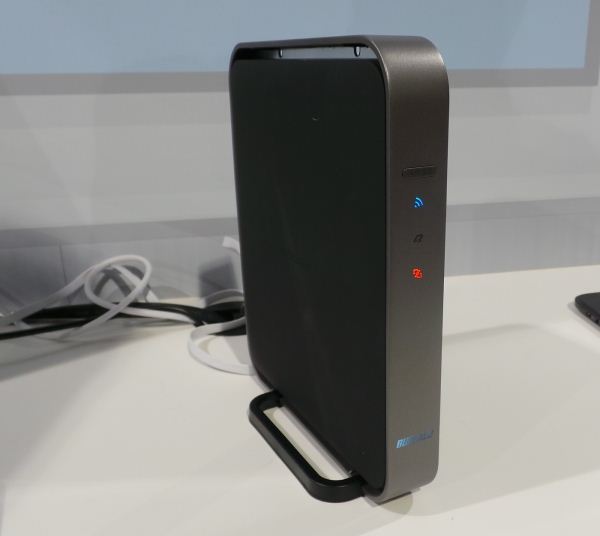
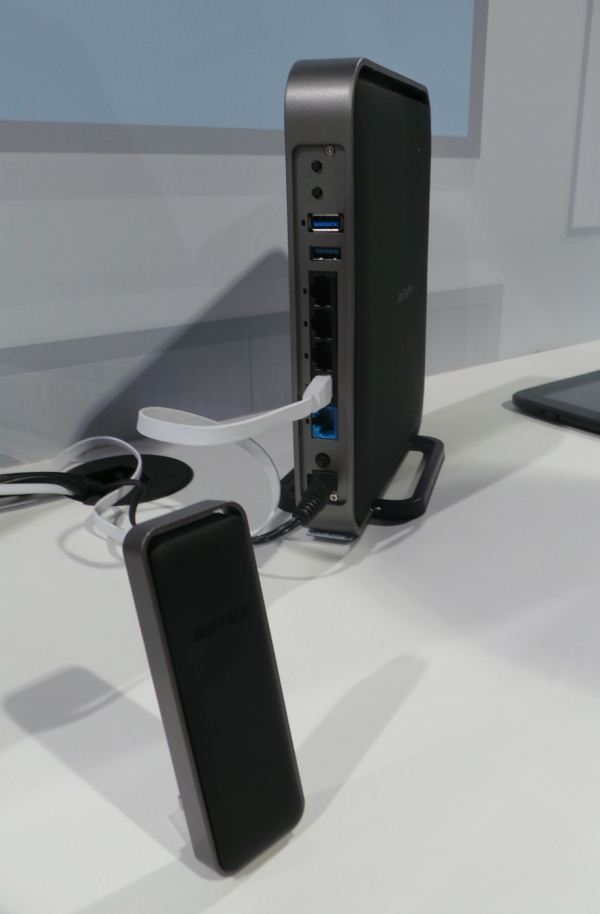
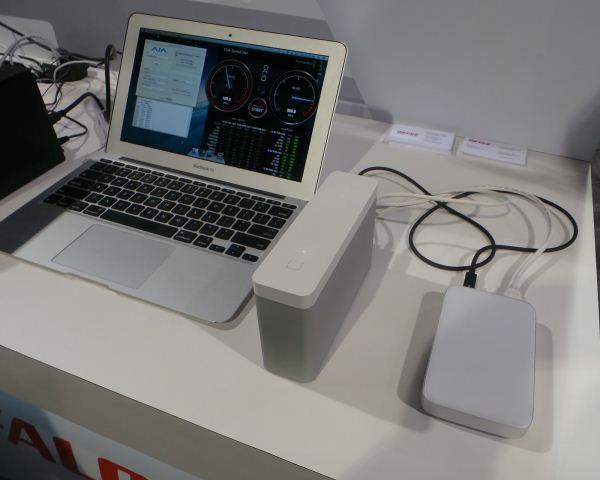



 Quote
Quote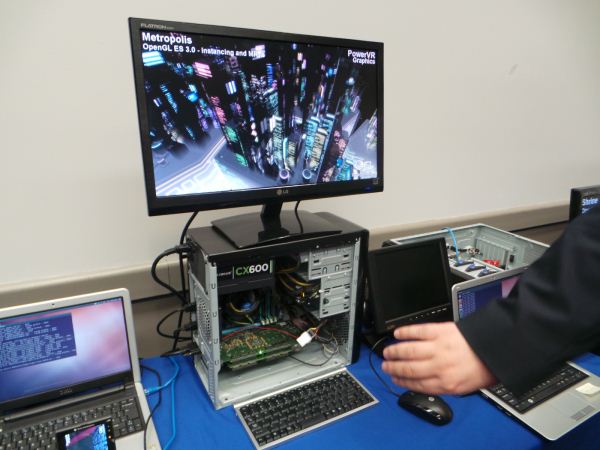
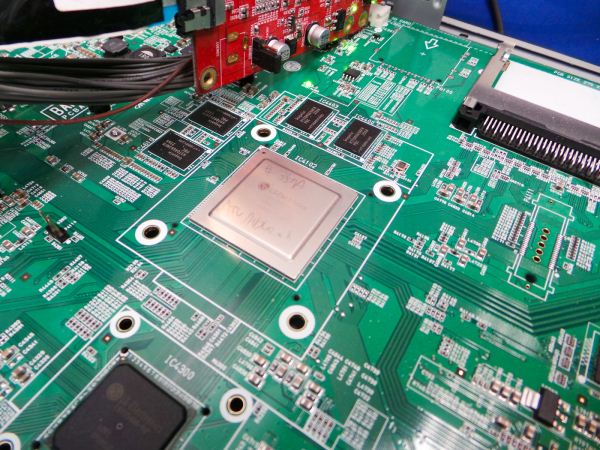

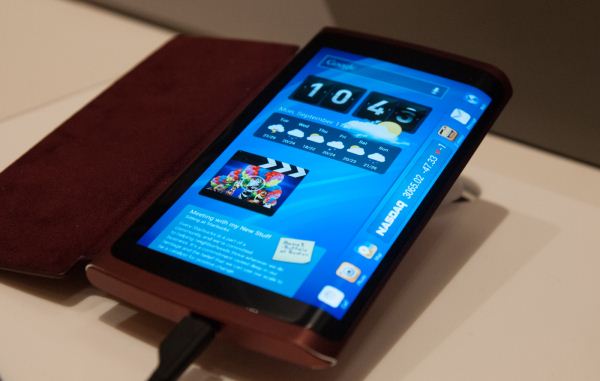

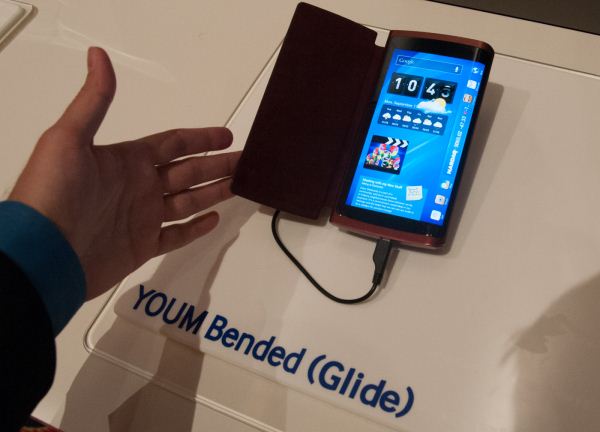
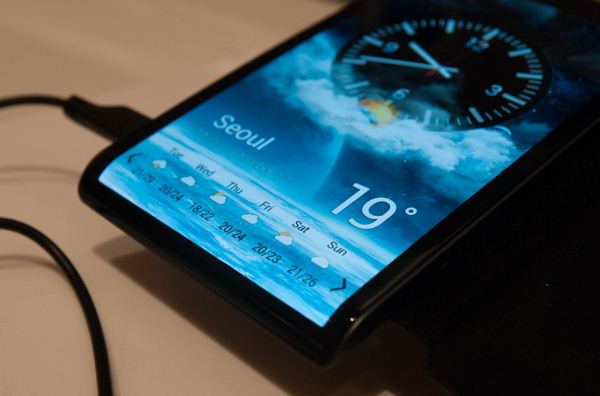
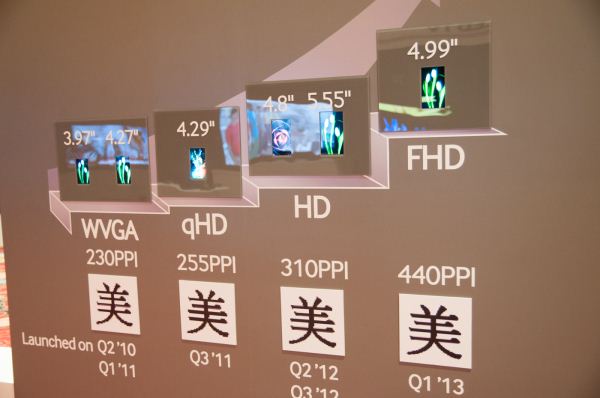
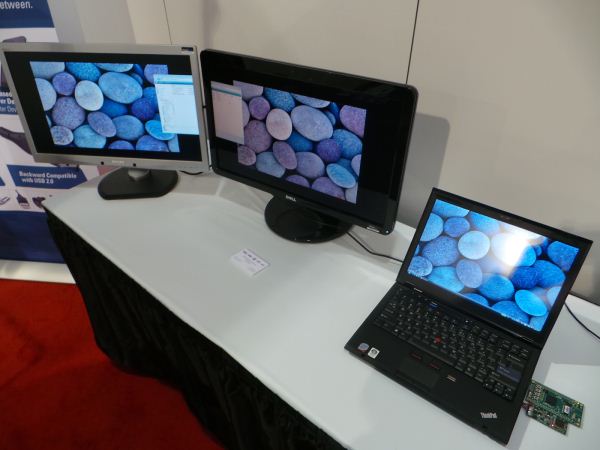
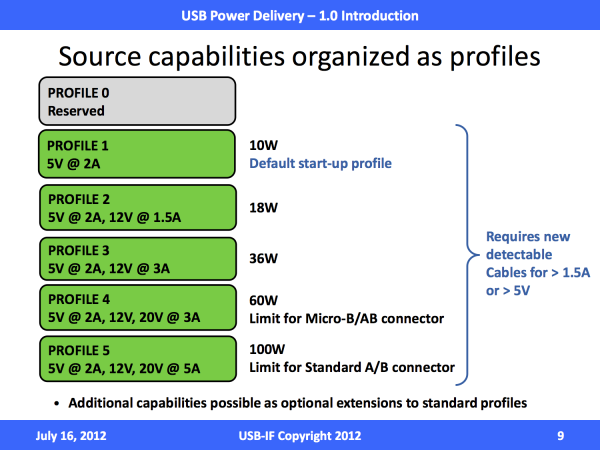
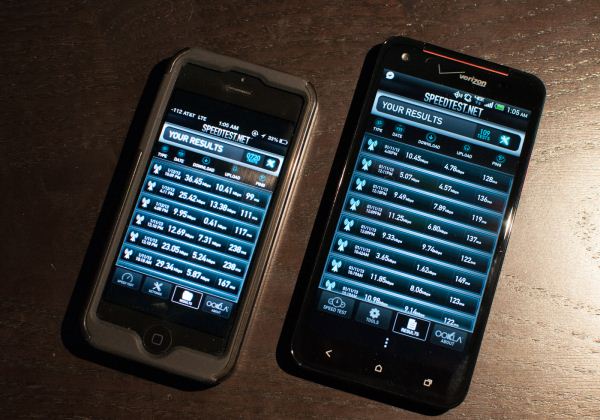
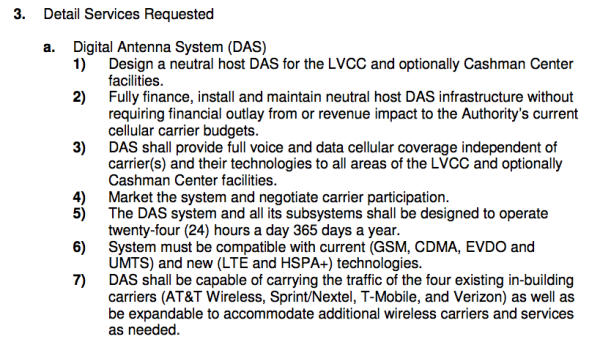
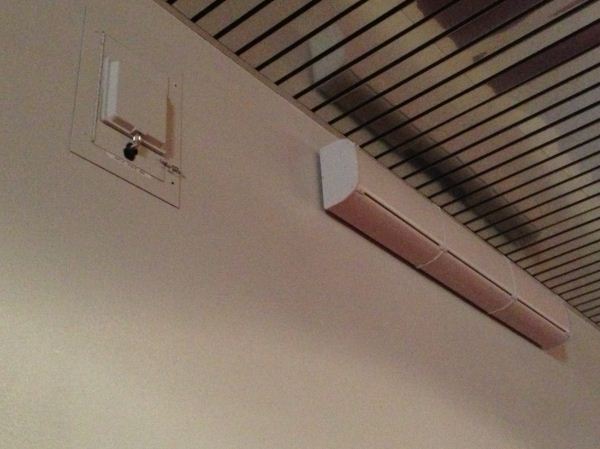





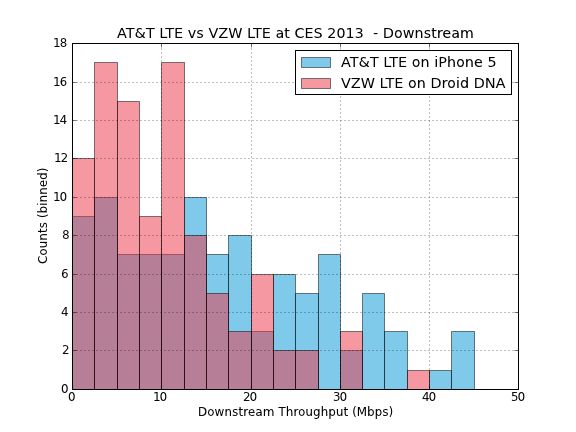
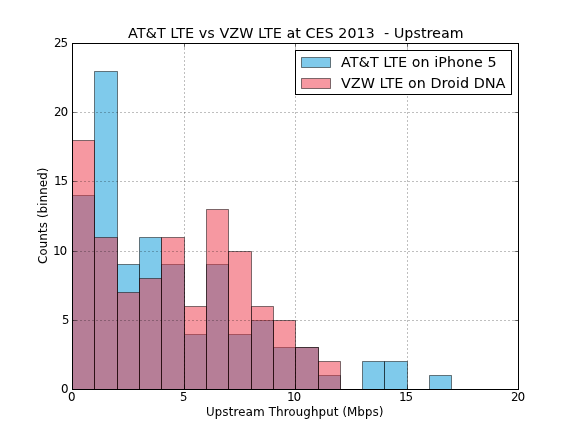
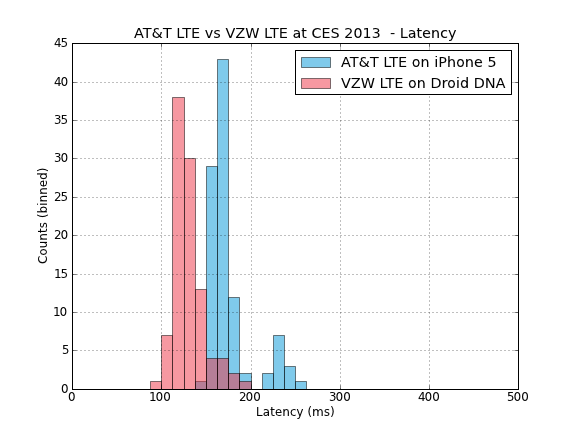
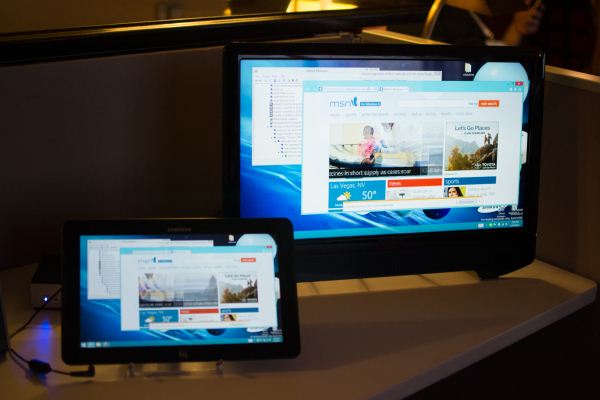
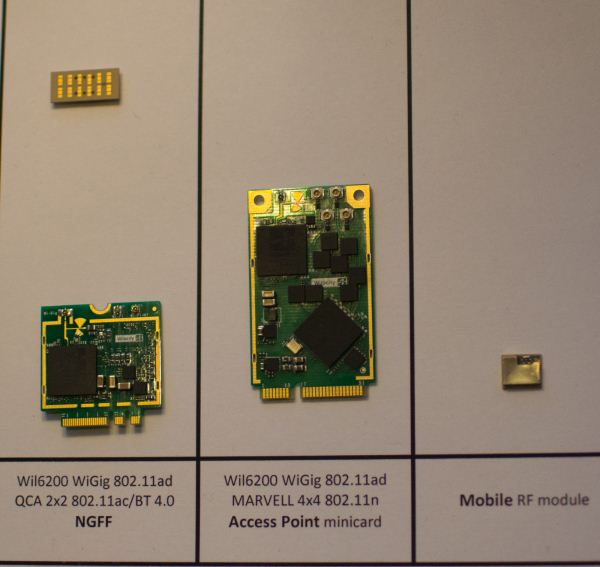



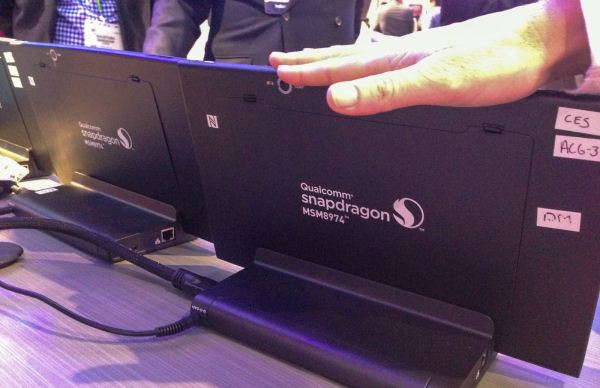
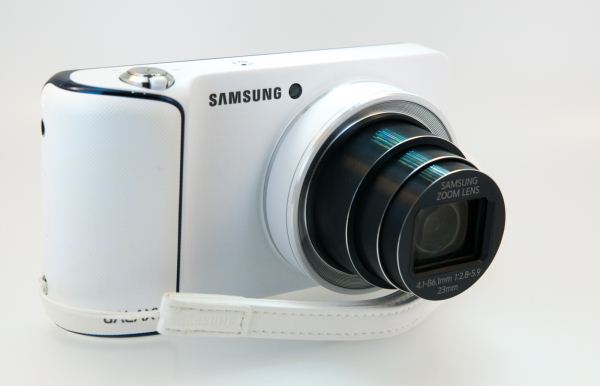
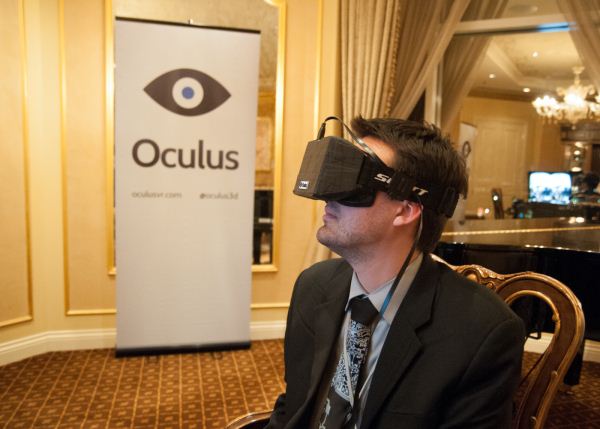

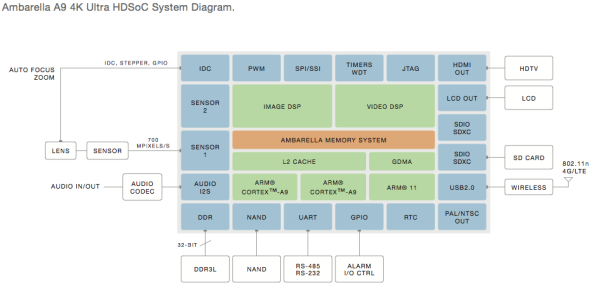
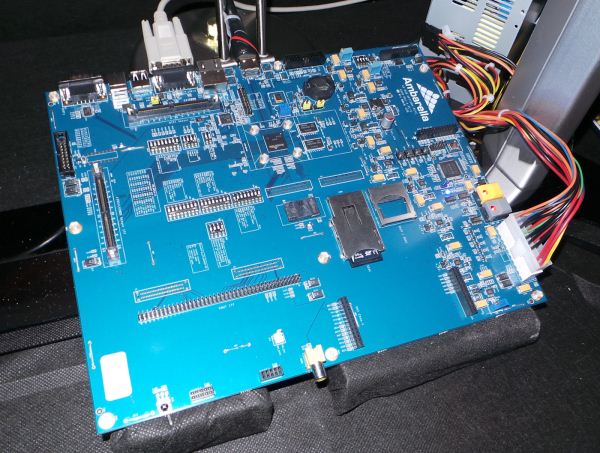
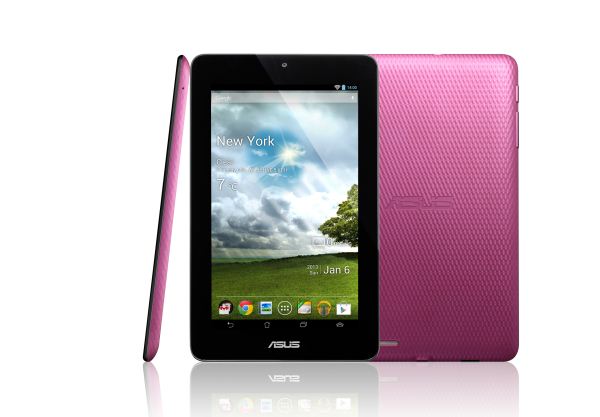
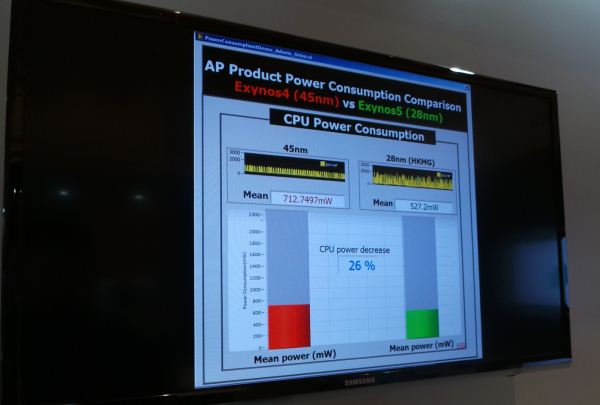
















Bookmarks